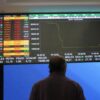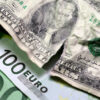By Rae Wee
SINGAPORE (Reuters) -The dollar flirted with a two-year peak on Thursday after the Federal Reserve signalled a slower pace of rate cuts in 2025, while the yen slid after the Bank of Japan (BOJ) stood pat on rates and offered few clues on its monetary outlook.
The BOJ kept interest rates steady earlier in the day, as expected, sending the yen down as much as 0.3%.
The Japanese currency then extended losses to weaken past the 156 per dollar level for the first time in a month as BOJ Governor Kazuo Ueda spoke in a post-meeting press conference that kicked off at 0630 GMT.
It last traded nearly 1% weaker at 156.30 per dollar.
While investors had been looking out for hints of imminent BOJ tightening, particularly after the Federal Reserve struck a more hawkish tone at the conclusion of its policy just a day earlier, Ueda’s comments left investors none the wiser.
The governor reiterated that policymakers would need more time to assess incoming economic data and the implications of U.S. President-elect Donald Trump’s policies upon his return to the White House in January.
“The Fed’s pause and BOJ’s reluctance suggests that dollar/yen may face further upward pressure,” said Christopher Wong, a currency strategist at OCBC.
In the broader market, the fallout from a hawkish tilt by the Fed on Wednesday continued to ripple across markets, with moves in currencies particularly pronounced as traders heavily dialed back on easing expectations next year.
The U.S. dollar’s rally sent its peers including the Swiss franc, the Canadian dollar and the South Korean won tumbling to milestone lows in early Asia trade on Thursday.
“We think (the) decision marks the start of an extended pause from the FOMC, even if it is a little too early to say this explicitly,” said Nick Rees, senior FX market analyst at Monex Europe.
“We now expect U.S. rates to stay on hold, at least through the first half of 2025. If right, then an upward adjustment in market expectations should support dollar upside over the coming months.”
The bottomed at a five-month trough of 0.90215 per dollar, while the Canadian dollar sank to its lowest in over four years at 1.44655 per U.S. dollar.
The won tumbled to its weakest level in 15 years, while the Australian and New Zealand dollars similarly fell to more than two-year lows.
In stark contrast, the steadied at 108.05, near Thursday’s two-year top of 108.27.
Fed Chair Jerome Powell said more reductions in borrowing costs now hinge on further progress in lowering stubbornly high inflation, with his explicit – and repeated – references to the need for caution from here on sending global stocks plunging and yields spiking.
The Bank of England (BoE) also announces its policy decision later on Thursday, where it is expected to stand pat on rates.
Ahead of the outcome, sterling was pinned near a three-week low at $1.26005. The euro meanwhile rose 0.42% to $1.03945, nursing its steep 1.34% drop in the previous session.
Down Under, the bottomed at $0.6199, before rebounding slightly to last trade 0.26% higher at $0.6234.

The New Zealand dollar also hit its weakest level since October 2022 at $0.5608 and last bought $0.5639.
The was further pressured by data on Thursday that showed New Zealand’s economy sank into recession in the third quarter, cementing the case for more aggressive rate cuts.

















